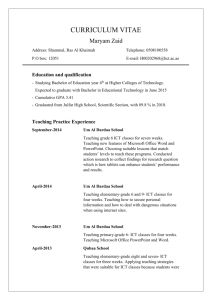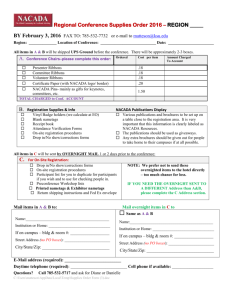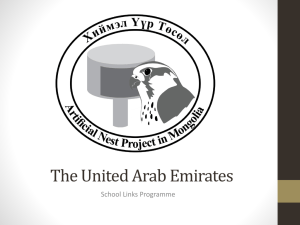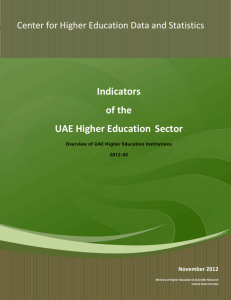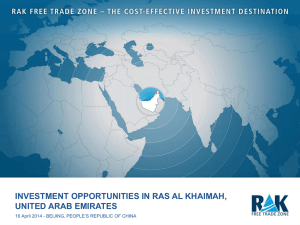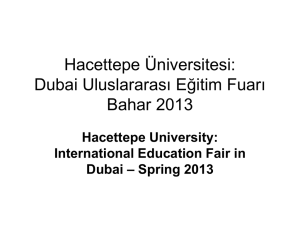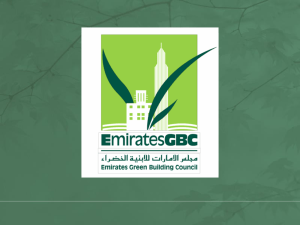Starting with New Student Orientation and
advertisement
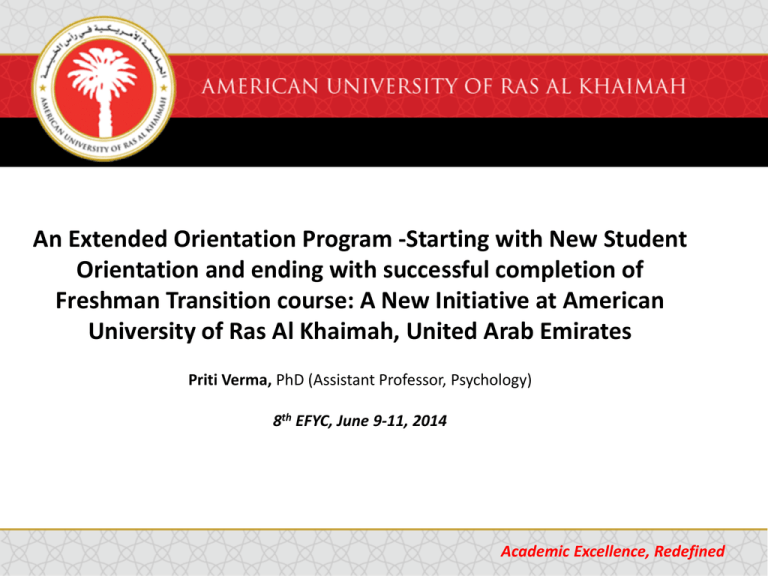
An Extended Orientation Program -Starting with New Student Orientation and ending with successful completion of Freshman Transition course: A New Initiative at American University of Ras Al Khaimah, United Arab Emirates Priti Verma, PhD (Assistant Professor, Psychology) 8th EFYC, June 9-11, 2014 Academic Excellence, Redefined Higher Education in UAE • Provision of quality education in the United Arab Emirates began shortly after the establishment of the federation (1971) with the inception of the first university in Al Ain, the United Arab Emirates University (1976). • In 1988, the first four Higher Colleges of Technology (HCT) were opened (now 12 campuses across UAE). • In 1998, Zayed University was opened for women with campuses in Abu Dhabi and Dubai. • From 1995, several international universities opened branch campuses in the Emirates include Wollongong University, Middlesex University, Bolton University, Michigan State University and Rochester Institute of Technology, New York University, Masdar Institute and many more. • Segregated education Academic Excellence, Some more information about AURAK • Size of institution: Currently, 580 students, 50 faculty and 50 staff members • Geographical location: Ras Al Khaimah emirate (northern part of United Arab Emirates) • Nature –Undergraduate and graduate programs • Mission – research, teaching, community service • Typical first years – Students are at different levels of readiness for university, diverse (40 nationalities), young (17-19 years of age), males and females, first generation to join university New Student Orientation University life is a new, overwhelming experience for many new students in UAE. Many universities around the world offer extended orientation programs. And, we at AURAK also believe that this should be an ongoing process in first year to achieve the following: • • • • • • Acclimate to students’ life Help new students organize their classes Get students familiar with where to find things Reduce students’ drop out during the first year Make new friends Teach them skills and experiences students need for academic success. Phases of New Student Orientation Program Planning of the NSOP was done in Spring and Summer, 2013 which included the following: 1. 2. 3. 4. 5. 6. 7. 8. Recruiting the student leaders Designing of the program Training of staff and students Meetings Information to university community Implementation of the Program Results and findings Reward What’s new in NSOP? • • • • • • • • • • • • • Student leaders (Junior and Senior year) For each 10 new students, one student leader was assigned. Leaders contacted the new students before their arrival New students were received by their leaders on orientation day University Fair Department booths Launch of New Student Workbook Campus tour led by leaders Scavenger hunt Program orientation in separate rooms Faculty advising and course registration NSO survey Week long orientation program New Student Orientation Survey Results New admissions: 200 students (125 were enrolled in academic programs) NSO Survey Evaluations Agree NSO Survey Evaluations Agree Information received prior to orientation 82% Learned about different clubs and organizations 83% Orientation Check-in 84% 84% Usefulness of information in your packet 88% Learned about different academic resources on campus Learned about other resources on campus 81% Length of Program 75% Program content 82% Gained a clear understanding of how to register for classes 88% Orientation helped me to know what to expect academically 81% Enjoyable experience 82% Orientation helped me to know what to expect socially 84% Campus tour 93% 93% Resources available to me at AURAK if I have questions about housing 88% Got all of my questions answered during orientation Overall evaluation of orientation 81% UNIV 100: Freshman (First Year) Transition Course • AURAK follows the American model: General Education Program • UNIV 100 belongs to Gen Ed Program • UNIV 100: First time offered in Spring 2012 • Requirement for degree • Must be taken in first semester by first year students • So far, only S or US (no number grades) Main Characteristics of UNIV 100 at AURAK • Same mastermind: An extension of New Student Orientation • Aim to ssist students with the transition from secondary school to university life • Multifaceted content and flexible course structure • Topics • New Student Workbook : TypeFocus Careers, College readiness inventory TypeFocus Careers • Online Survey • Self- assessment for personality, skills, interests and values • Assists one to make goals, choose occupation and start a career portfolio • Student and Administrator access Snap Shot of TypeFocus Careers College Readiness Inventory (adapted from UAEU) • Inventory aimed to help the students understand how well they are prepared for university life • Components of inventory: Academic self-efficacy, time management, academic stress, writing skills, note taking, classroom attentiveness and motivation, test taking, physical disability • Students responded: Yes/No • Responses were submitted to administrator to get feedback • Practical tips on how to overcome the areas of weakness as well as a list of departments and organizations that can assist students were provided to each. Results of College Readiness Inventory Student responses: 106 students out of 125 completed the inventory. Area of weakness % reported this weakness Academically self- efficient 0.1 Time management skills 37 Academic stress 57 Writing skills 29 Note taking skills 18 Attention 7 Test taking skills 11 Student Referrals based on Results • Student Learning Center: Writing Center and Math Clinic, peer tutoring • Career Counseling • Workshops and Seminars • Self Help resources Library • Student Activities Discussion Topic How transitions are supported in your institution? Thank you! Questions and Answers! Priti Verma, PhD Assistant Professor, Psychology American University of Ras Al Khaimah P O Box: 10021 Ras Al Khaimah, UAE Tel: +971 7 2210 500, ext. 1289 Email: priti.verma@aurak.ae References 1. Bigger, J.J. (2005). Improving the odds for freshman success. Retrieved from NACADA Clearinghouse of Academic Advising Resources Web http://www.nacada.ksu.edu/Resources/Clearinghouse/View-Articles/Advising-first-year-students.aspx 2. Schroeder, C. (2003). The first year and beyond. About Campus, 8 (4), 9-16 3. Howey, S.C. (2008). Factors in student motivation. Retrieved from the NACADA Clearinghouse of Academic Advising Resources Web site. http://www.nacada.ksu.edu/Resources/Clearinghouse/View-Articles/Motivation.aspx 4. Boyd, B., Largent, L. & Rondeau, S. (2008). Community College Orientation Basics: How to structure a new student orientation program. 5. Barefoot, B. O. (2000). The first-year experience-are we making it any better? About Campus, 4 (6), 12-18. 6. Habley, Wes. (2003). NACADA Summer Institute, quoting 'Academic Advising: Critical Link in Student Retention.' (1981). NASPA Journal, 28(4): 45-50. 7. Gardner, J. N., & Siegel, M. J. (2001). Focusing on the first-year student. Priorities, 17, 1-17.

